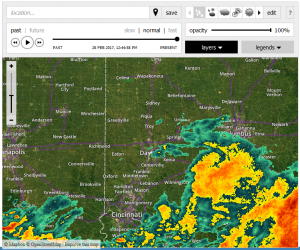In the previous article on Quantitative Philosophy, I discussed the nature of humor and how, once defined, we can quantify how funny something is. Humor is one of the most human concepts that I can think of, so adding to this theme, I will break down what it means to have a good long-term romantic relationship, mathematically. Because we as humans have a number of emotional and intellectual needs, determining a person’s viability as a mate requires that this person contribute to these needs. But what are these needs? To answer that question objectively, I polled the largest sample size of coworkers I could without being called into Human Resources. Based on the results of that poll, I have narrowed the criteria to 10 such needs:
- Degree of sexual attraction to the person
- Degree of importance placed on the person’s financial income
- Degree of similarity of moral views with the person
- Degree of similarity of political views with the person
- Degree of equality regarding reciprocation
- Degree of similarity of hobby interests
- Number of years already spent with the person
- Degree of shared importance of pets in the relationship (or perceived future importance, if no pets yet exist)
- Degree of shared importance of children in the relationship (or perceived future importance, if no children yet exist)
- Degree of ability to consistently maintain conversation without active effort
Naturally, I will explain each of these as some sound a little abstract. Also, based on their frequency in the poll results, they are not all of equal importance. Therefore, they have an assigned multiplier which will be explained as well:
Degree of sexual attraction to the person
This primary requirement certainly isn’t unique to humans. Rather, it is a prerequisite for a more basal need: survival of the species. A physical reaction to another person is an evolutionary response to their reproductive viability–presumably the primary reason for forming a relationship to begin with. And, while a relationship can exist without attraction, even anecdotally, I’ve never encountered a single example where it has. Certainly we could discuss alternate forms of sexuality, but for the sake of the article I’m sticking to common heterosexual relationships. Is due to this criteria’s biologic roots and ubiquity that it is assigned a 10X multiplier.
Degree of importance placed on the person’s financial income
Ah yes, the elephant in the room, yet still not as important as we are led to believe. There are studies which conclude that incremental increases beyond a reasonably comfortable standard of living do little to impact the health of a relationship. Still, money is a chronic point of stress in a relationship, and a certain minimum baseline is needed for general happiness, so it’s no surprise that for general happiness to carry over to a relationship, finances are required. It is because of this general requirement that it has been assigned an 8X multiplier.
Degree of similarity of moral views with the person

And now we begin to touch upon the human-specific criteria. Morality in this context is social conduct. This is more obvious than it sounds. Say, for instance, if my wife began torturing animals and throwing rocks at people (well, I might laugh at the latter, depending on the victim), I would translate those senseless acts of aggression to a future prediction of her conduct towards me. It’s an extreme example, but relevant. Relationships cannot exist with moral dissonance, so it is therefore rated a 10X multiplier.
Degree of similarity of political views with the person

Politics serve two purposes: they are the public’s collective perception on the state’s economic direction, and an extension of morality. Inevitably, the two are at odds. Specifically, it is the attempt to resolve this conflict as a group that defines politics. Because of its moral aspect it should be rated high, but due to its volatility and infinite complexities, it’s impossible to ever share an exact political view with another person, so it is ranked a modest 7 multiplier.
Degree of equality regarding reciprocation
Obviously if a person doesn’t get anything out of a relationship, then there’s no need to be in one. There is no explanation for this category, as it’s based on the perception of feeling. But anecdotally, many a loveless relationship has been attributed to giving too much and receiving too little, or not sharing chores fairly, so based on this frequency, it is given a 9 multiplier.
Degree of similarity of hobby interests
All things considered, you need something to do with your mate for recreation (besides that implied in the first category). But, with so little time available in established relationships to spend on shared interests, there doesn’t need to be many, and often the simple and common pastimes suffice. It is therefore rated a 3X multiplier.
Number of years already spent with the person
This category serves two purposes: First, we have what is called the “emotional investment” factor. While many argue that this causes loveless marriages to persist, in a broader sense it simply places value on time. As mortals, time is the enemy. Second, while you may not agree with the first point, there is a demonstrable correlation between newer couples rating their partners higher than older ones, simply out of infatuation. This category accounts for bias, and it is assigned a 10X multiplier.
Degree of shared importance of pets in the relationship (or perceived future importance, if no pets yet exist)
This one was surprisingly common. People as a whole are very concerned with pets. Draw your own conclusions, but since it’s only on this list due to its frequency in the poll, yet cannot be correlated to the success of a relationship, I ultimately settled on giving it a 3X multiplier.
Degree of shared importance of children in the relationship (or perceived future importance, if no children yet exist)
Children, on the other hand, can and will make or break a relationship. This should require no explanation. If the couple doesn’t agree on the status of children, there is a high probability of that relationship failing. Chalk this one up to evolution and directly related to sexual attraction. It is given a 10X multiplier.
Degree of ability to consistently maintain conversation without active effort
This one was difficult to define, being more a feeling of emotional contentment. So to assign it an empirical value, I’ve correlated it to the ease of intra-couple communication. If talking comes easy, it demonstrates a lack of tension between the individuals, which means they have a bond. I’ve also found that the age of the relationship has no impact on this category. A couple either has a connection or they don’t. And since this state of mind is vital to emotional health, it is a 10X multiplier.
How the formula works
To simplify the equation, I will replace the numerical categories 1-10 with alphabetic variables, respectively A-J.
Assign a value to each of the categories of 0-10, with 10 being the highest. The only exception is the number of years together, which is the actual number. Still, this category caps at 10, as the benefits of investment reach a point of diminishing returns (anecdotally, from the poll).
The math is scaled for a simple 0-100 range, with sub-ranges representing various levels of compatability. The formula is as follows:
[1.25(10A+8B+10C+7D+9E+3F+10G+3H+10I+10J)]/10
As before, here is a link to to download the calculator yourself:
https://moorheadfamily.net/data/Relationship%20Quotient.xlsx
In practice, I have been told that the results of this calculator were uncannily accurate, which makes me nervous. Perhaps it’s a number, like your IQ, that does you no good to know.
But before you ask, I will say that I will wisely not be providing an analysis of my own marriage as an example, although so as not to be hypocritical, I will say that the calculator is still in favor of me staying with my wife, so whew. Good luck, and probably don’t show the results to your spouse; or do, if you want to stir things up at home, or have evidence of irreconcilable differences for your divorce lawyer.
–Simon

 If you don’t know of XKCD, shame on you. Go there now and revel in its wonderfully sophisticated humor.
If you don’t know of XKCD, shame on you. Go there now and revel in its wonderfully sophisticated humor.

 But first things first–and a question that always bothered me: where do news stations get their national radar, because surely that has to be a shared network? Fortunately, it didn’t take long to figure out. If it was a nationally-shared network of data, then it had to be government-owned. It had been around too long and was too big for it not to be government-controlled (look at where national internet access is headed). I didn’t even have to Google this, for I already knew of this governmental entity: the National Oceanic and Atmospheric Administration:
But first things first–and a question that always bothered me: where do news stations get their national radar, because surely that has to be a shared network? Fortunately, it didn’t take long to figure out. If it was a nationally-shared network of data, then it had to be government-owned. It had been around too long and was too big for it not to be government-controlled (look at where national internet access is headed). I didn’t even have to Google this, for I already knew of this governmental entity: the National Oceanic and Atmospheric Administration: The joke, most simple in form evokes feeling. The recipient of the joke wonders about that chicken. The chicken has an objective. The chicken has become anthropomorphized. We feel for that chicken. We want to know about that chicken and why it felt the need to cross that road. This is social commentary.
The joke, most simple in form evokes feeling. The recipient of the joke wonders about that chicken. The chicken has an objective. The chicken has become anthropomorphized. We feel for that chicken. We want to know about that chicken and why it felt the need to cross that road. This is social commentary.


 Introducing, the water garden. I would trench as far as possible, then dig a deep hole, fill it with permeable material, and surround it with plants that tolerate flood/drought cycles. The cold weather broke and we were blessed with a beautiful weekend.
Introducing, the water garden. I would trench as far as possible, then dig a deep hole, fill it with permeable material, and surround it with plants that tolerate flood/drought cycles. The cold weather broke and we were blessed with a beautiful weekend.